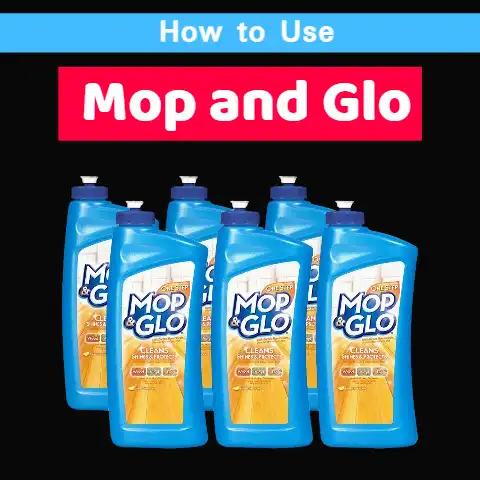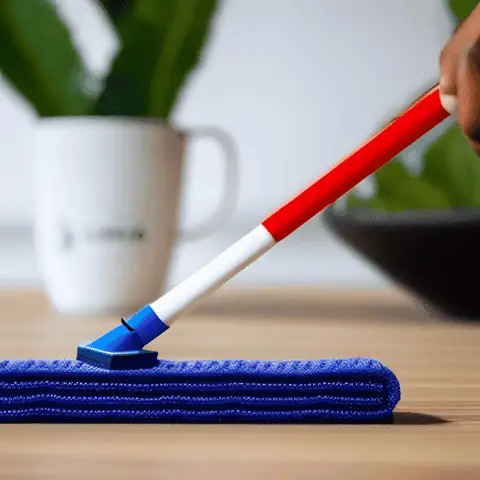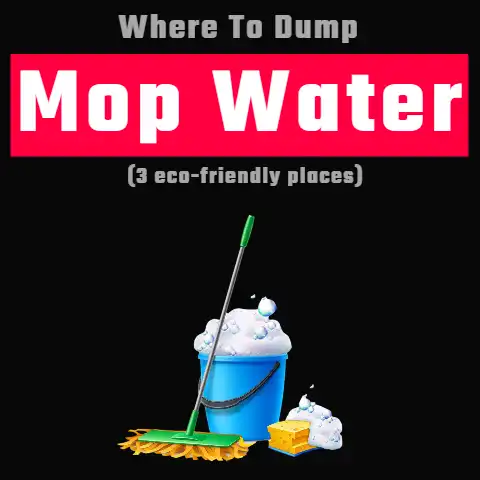What Helps Dust Mops Pick up More Dust (9 Ways Explained)
Regularly clean dust mops to maintain effectiveness. Store them in a clean, dry place. Opt for high-quality materials that attract and hold dust. Apply a dust mop treatment for better dust collection. Use a sweeping motion in one direction. Avoid overuse. Keep floors dry to prevent dust from sticking. Perform regular maintenance, replacing worn-out mop heads.
Imagine this scenario: you diligently go about cleaning your home, carefully sweeping your floors with a dust mop, only to find a thin layer of dust still lingering on the surface.
Frustrating, isn’t it?
If you’ve ever experienced this dilemma, you’re not alone.
Many homeowners, like yourself, strive to achieve the utmost cleanliness and desire a dust mop that can truly live up to its name.
But fear not! In this blog post, we will dive into the world of dust mops and explore what makes some more effective than others in picking up dust.
As someone who understands the challenges of maintaining a pristine living environment, I have delved into the intricacies of dust mop functionality and researched countless discussions on forums, YouTube comments, and other platforms.
Through this extensive exploration, I have gained valuable insights into the common issues faced by individuals when it comes to dust mops.
In this article, I will not only reveal the factors that contribute to the lackluster performance of certain dust mops but also present you with practical solutions to maximize dust collection efficiency.
By the end of this read, you’ll be equipped with the knowledge and know-how to transform your cleaning routine and bid farewell to pesky remnants of dust.
So, if you’re tired of mediocre dust mop performance and yearn for a cleaner home that sparkles with every step, join me as we uncover the secrets that will revolutionize the way you tackle dusting.
Need a Fast Solution?
If you’re on the hunt for a fast solution to boost the dust-collecting power of your mops, check out these products – microfiber dust mop pads, electrostatic dust mops, and dusting spray.
Firstly, microfiber dust mop pads are a game-changer. These innovative pads are designed to attract and trap dust particles effectively, leaving your floors spotless.
Additionally, electrostatic dust mops can be a fantastic investment.
They use static electricity to attract and hold onto dust, ensuring a thorough cleaning in no time.
To enhance the efficiency of your dust mop, consider using a dusting spray specifically formulated to attract and bind dust particles.
These powerful sprays make your mop even more effective, leaving your home or office looking pristine.
Say goodbye to pesky dust and hello to a dust-free environment with these top-notch products and services!
What helps dust mops pick more dust?
Based on my first-hand experience, dust mops eliminate the sand, soil, litter, and dust from floors and get the surface ready for wet mopping.
There is no need to use dust mops to remove spills.
Effective dust mopping is the assurance with these tips:
- The dust mop head size should be according to the floor size and 24” is the common size in use.
- Use a putty knife to remove materials sticking to the floor such as gum.
- Dust mopping requires walking forward and moving from left to right the mop in a 45-degree angle. Never leave piles of dust standing for long or they may be scattered by people.
- Use the dust mop head to pick more dust either clockwise or anti-clockwise. Select the easiest path.
- Sweep corners, hard-to-reach areas, and edges using an angled corn broom. Sweep the soil to the open area and the dust mops help pick it up with ease.
- Push the dust mop ahead while dust mopping corridors and overlap by 3” of your path.
- Avoid lifting dust mops while mopping. Shake over the soil, and the dust mop. Avoid shaking dust mops inside the room to avoid spreading bacteria or dust airborne.
- Dust mop areas having chairs and desks, by pulling them out and under the desk. Portable objects may be moved and put things back in place.
- Use a corn broom to pick up piles of soil and collect them in a dust pan.
Tips for professional dust mopping
We have found from using this product that, an important task is dust mopping to keep the facility clean and safe.
Here are five steps to remove debris and dust effectively from high-traffic areas.
Prep for dust mopping
Preparing is following a regular schedule for dust mopping and following it without fail.
The schedule set depends on the needs of the facility and the traffic it receives in each area.
However, there is a need to dust every week, night, or month.
It is to dust mop the floor surface after moving the objects, obstructing your cleaning path.
And remove large debris pieces that ensure you sweep the path easily using a dust mop.
Pick the right dust mop
There is a variety of dust mops and the best dust mops to pick up more dust are as per your needs and budget.
Choosing a dust mop as ½ or 1/3 width helps clean faster. For a wide space, pick a 36-inch path dust mop.
It allows cleaning half the aisle in one pass, and customers in a grocery store can move around while cleaning.
For institutional and industrial needs, buy a dust mop from a variety of dust mops.
It has stapled, long, and twisted tightly natural cotton yarn for dust mops. It is great for dust control.
The key-slot style featuring heavy duty is easy to use and fast to use.
Dust mop the area
If the area is small, start working from the doorway, the outer perimeter and push toward the center of the room the debris.
As you dust mop, get close to the edges. Shake out the debris and dust out. Also, use the dustpan and broom to remove dirt and debris.
Sweep up trash, dirt, and pieces of debris and empty them into a trash container.
After dust mopping, shake the mop out to eliminate debris and dirt.
If possible, wash the mop. Prolong the lifespan with a dust mop treatment.
Treating Dust Mops
The defense’s first line relies on the program of floor maintenance.
The process of dust mopping daily reduces wear and the floor appearance prolongs removing dry soils.
In between scheduled mopping, account for proper care.
Treat a dust mop such that you extend the floor life and ensure the floor retains its pristine shine.
Based on my observations, treating a dust mop is to attract dust by attraction, and dust is airborne like a magnet.
While mopping, it eliminates kicking up into the air. Custodians taking a dust mop and following the dust mop treatment mean they cannot use it immediately.
It is because she or he will leave on the floor some oil and the floor will become slippery.
Treating a dust mop properly is to wash a new dust mop, spraying the mop on all sides with treatment, roll it into a ball, and let it sit for 24 hours in a plastic bag.
The oil permeates the mop and as the user uses the mop, the floor stays free of oil residue.
Nothing will transfer from the mop and it allows mop cleaning to maintain a better shine of the floor for a long time.
How Not to Use These Mops
It is crucial to know about the messes you deal with while cleaning. Using a dust mop to clean some spilled drink is impossible.
The yarn does not absorb the liquid. The yarn of the dust mop is not strong to facilitate cleaning spilled liquids after drying up.
Using a wet mop to clean floor dirt or dust when the floor is muddy is a huge task. It makes the floor dirtier if you try using dry dust mops.
Thus, there is a need for both mops, dry and wet to hit the floor.
The pre-laundered dust mop yarn enhances the ability to pick up soil and dirt on the floor.
So mop outside and shake the dust and dirt off.
Conclusion
Dust mops pick up more dust as they are designed to trap such things scattered across or on the floor.
There is no need for water to use the mop always as proper dust mopping. You can also dry sweep the floor to pick up substances of all kinds.
The dust mop helps dust ceilings and walls.





